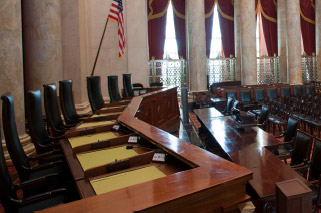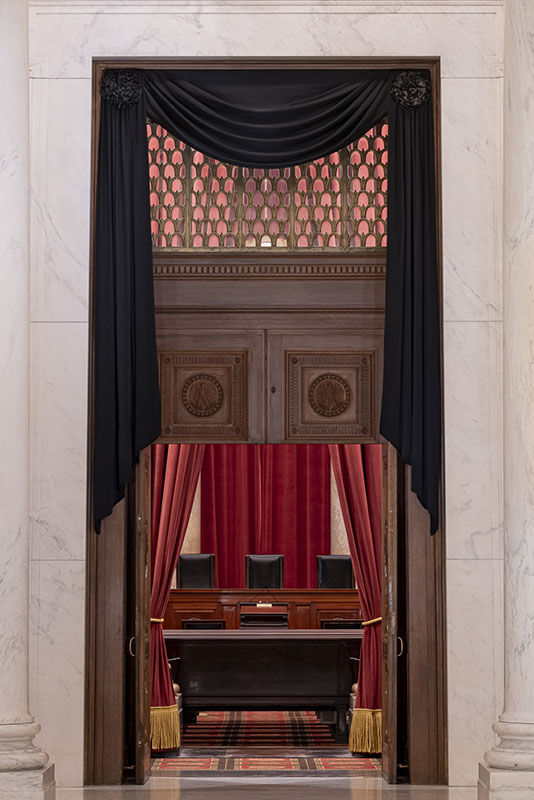Today at the Court - Tuesday, Jun 3, 2025
- The Supreme Court Building is open to the public from 9 a.m. to 3 p.m.
- Courtroom Lectures available within the next 30 days.

Recent Decisions
More Opinions...
Did You Know...
Draping of the Courtroom Doors
In accordance with Court tradition, a black drape is hung over the Courtroom doors as a sign of respect and mourning following the death of a Justice. This tradition dates back at least as far as the death of Chief Justice Salmon P. Chase in 1873, and is believed to have been followed for every Justice who has died since Chase’s passing. The death of a sitting Justice is also recognized by draping the chair of the late Justice and the front of the Bench where that Justice sat. Only the Courtroom doors are draped upon the death of a retired Justice, as seen here in memory of Justice David Souter. These signs of mourning are traditionally left in place for 30 days.
Justice Souter’s Biography.


